
views
X
Research source
Some people experience nausea-related anxiety before a performance (like a presentation or speech) or in car rides. Some people have a fear of vomiting, and in turn, become nauseous in the anxiety of avoiding vomiting. To reduce nausea from anxiety, the best course of action is to reduce your stress and anxiety.
- Try taking 3-6 deep breaths when you start to feel nauseous from anxiety.
- Focus on your other senses when you feel nauseous. What do you see around you? What do you hear? What can you smell?
- Sticking to bland foods ahead of stressful situations, like bananas, applesauce, or toast, can help prevent nausea.
Coping with Anxiety Symptoms Before and in the Moment

Eat to prepare for nausea. If you are going into a situation in which you may become nauseous, prepare your stomach ahead of time. Eat a bland diet, like the BRAT diet, which consists of bananas, rice, applesauce, and toast. Avoid certain things like fried foods, spicy foods, or foods with strong aromas. Eat smaller meals to help your stomach digest less food. Start eating or drinking ginger, like drinking ginger tea. Ginger can help settle the stomach. For more information, check out How to Cope With Nausea.
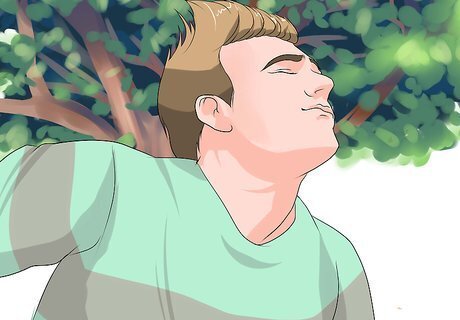
Do some deep breathing. If you start to feel nauseous, taking deep breaths can help ease anxiety. Practice taking deep breaths when you feel anxious and nauseous. Use your breath as a way to relax your body and your mind. Wherever you are, turn your attention to your breathing, making it more purposeful. Increase the length of your inhales and exhales, breathing deeply for 3-6 breaths, until you feel calm. Notice how you feel before you breathe deeply, then notice how you feel afterward. Does your mind or body feel different? Are your thoughts the same?
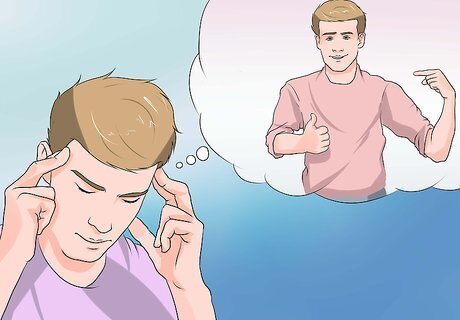
Practice visualization. If you have specific fears around certain things (such as giving a presentation or taking exams), use visualization as a way to cope. Imagine yourself feeling confident as you deliver a flawless presentation or as you answer each test question with ease. Imagine the feelings you feel as you succeed or as you relax.
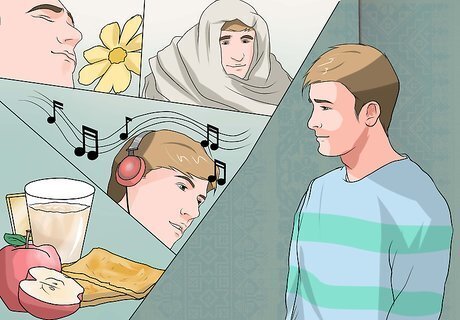
Use your senses. When feeling anxious and nauseous, avoid turning your attention inward toward feelings of anxiety or feelings of nausea in your stomach. Instead, focus on your immediate surroundings with your senses. Notice how your body feels, starting with your arms and legs all the way down to your feet planted firmly on the ground. Look around you and see the little details of where you are. You can also have photos or pictures to look at that help you feel calm. Listen closely for any noises, perhaps the hum of the heater or birds outside your window, or put on soothing music. For smell, light scented candles or inhale the beautiful aroma of flowers. Taste an enjoyable food, and really savor each bite. For touch, wrap yourself in a soft blanket, pet a dog or a cat, or sit outside in the breeze. Engage your senses as a way to connect yourself to your surroundings and provide yourself with some self-soothing techniques.
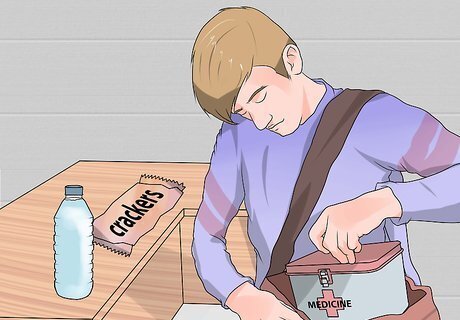
Have a nausea care bag. You may not be sure what comes first: the nausea or the anxiety. Often, they go together, like when you travel long distances in a car and have a fear of getting car sick. If you start to feel nauseous, you may begin to experience fear of throwing up. To put your mind at ease, carry some medications or other helpful items during vulnerable times. You can carry medicines as well as crackers and water or anything else that helps you. You can also include a stress ball or a small item that brings you comfort.
Reducing Your Stress
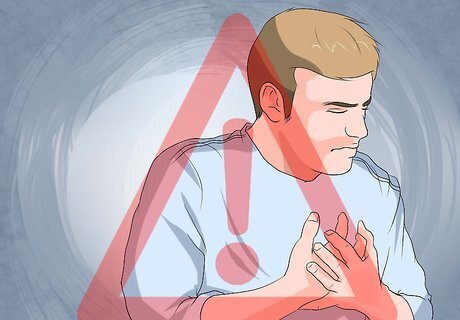
Experience the nausea as an alert system. Nausea is a bodily symptom of anxiety that alerts you to an emotional state. Instead of seeing it just as a problem or discomfort, see it as an alert that your emotions or mental state or off-kilter. You may be so used to feeling anxious that you fail to experience fully the emotional state your body is reacting to, and this is your body’s way of saying, “Pay attention!” Acknowledge that you are feeling anxious. Then, choose how you want to handle the anxiety and reduce your stress in the moment.
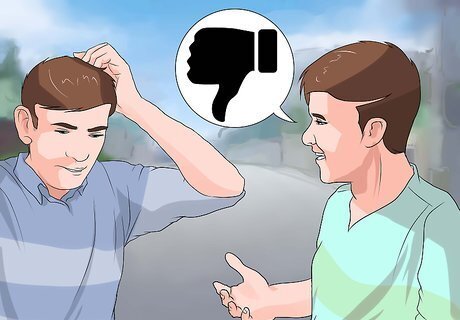
Cut back on extra stressors. If there are things (or people) in your life that cause you stress, consider cutting back or cutting them out. Perhaps you have one friend or family member that comes to you with problems or that relies on you more than he or she should. Talk to this person and say that you are no longer available to fill this type of role. Say, “I value our relationship, yet I feel like you come to me for things that I have a hard time dealing with. It would be helpful to me if you found other people to lean on besides me.” Maybe you have a commute that causes you stress. Consider taking the train or an alternate route that is less trafficked.
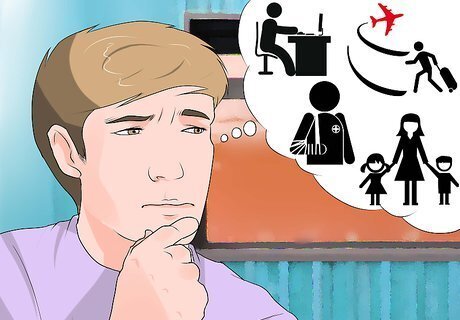
Reconsider your responsibilities. Think of all of the things in your life that cause you stress (whether good or bad): work, school, family, partner, children, volunteering, meetings, presentations, travel, being sick, etc. If you’re feeling overwhelmed, see what things can either be cut out or cut back. The less stress that’s in your life, the less anxiety will be triggered. If you feel overwhelmed at work, consider asking to reduce your workload or share responsibilities with another co-worker.
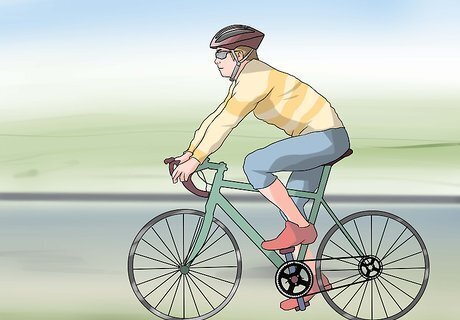
Take some time off. If you feel like you just can’t get away from the stressors in your life, take a few days off. Allow yourself some time to reset, do things you enjoy, and get away from the things that are causing you stress, even if it’s momentary. While on this break, don’t allow yourself to think about the stress you have back home or at work; let yourself fully enjoy your time. While taking a break, do things you’ve been meaning to do, but haven’t. Go to the museum, ride your bike down the trail, or take your dog for a hike. Do things that bring a smile to your face. Even some time off from your day can be helpful, if you can’t take time off from work. Take a walk during your lunch break, spend some time gardening, or play with a pet.
Reducing Anxiety Overall
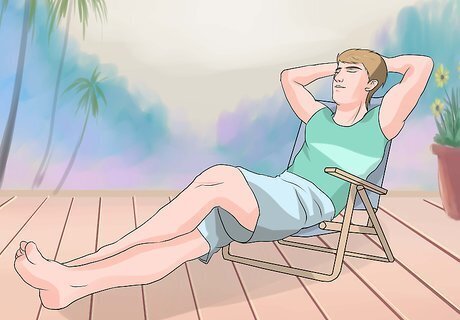
Practice relaxation techniques. There are lots of ways to relax, which can include journaling, playing or listening to music, and lighting candles and taking a bath. One way to relax that helps the mind and body is through progressive muscle relaxation. While lying down, systematically tense and relax certain muscle groups. You can start with your feet and move upward, tensing first your toes, then releasing the tension. Then move to your ankles, shins, knees, thighs, buttocks, stomach, arms, chest, neck, and face. Set aside 5-10 minutes each day to practice relaxation.
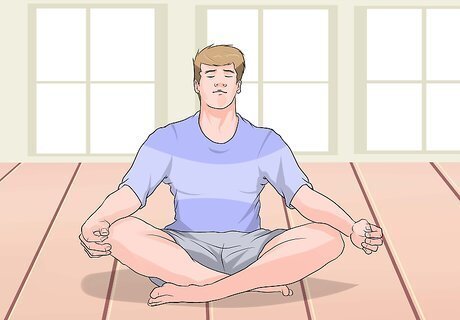
Meditate. Regular meditation can help rewire the brain and activate parts of the brain responsible for joy and serenity. Mindfulness meditation can be used to deal with stress and anxiety. Simply be fully in each moment and observe yourself and your surroundings without placing judgment or evaluation on any experience. You can practice mindfulness while walking (noticing each step you take, the pace at which your body moves), and in sitting meditation by observing each thought that comes to mind, yet not judging it or following it, but just observing. Practice mindfulness while eating. Smell the food before putting it in your mouth. Once eating the food, observe the texture, flavor, and temperature. Do this with each bite you take.
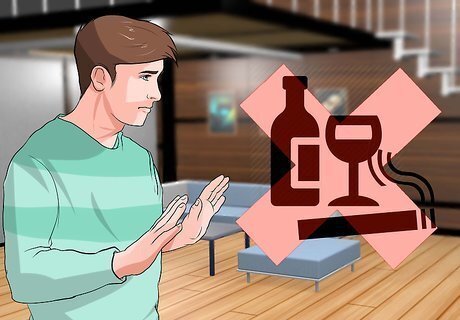
Avoid alcohol and nicotine. Both alcohol and nicotine may give a small feeling of relief, but actually increase anxiety as they wear off. Resist your urge to turn to alcohol or nicotine as ways to cope with stress and anxiety. Instead, use relaxation, meditation, or another coping strategy.















Comments
0 comment